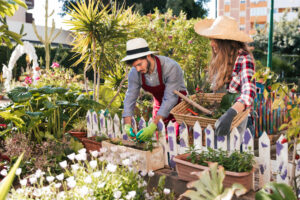Tips For Designing A Garden
 Make A List Of Needs And Wants
Make A List Of Needs And Wants
Prepare a list of what you want and need. If your children need a space to play, if you want to grow vegetables, if your family likes to gather in the garden, write a list and with those ideas in mind, make a small rough sketch of where you want things to be in your garden. . This is an important first step for those who want to get started in garden design (Landscaping).
Understand The Terms Used In Landscaping
Knowing the correct terms can help make the landscape design process easier. Although you may be familiar with the most common ones like “annual,” “perennial,” “shrub,” and “tree,” you may not be familiar with others like “deciduous,” “flowering,” “evening sun,” “mulch.”, “ornamental tree”, to name just a few. Knowing these terms is useful when choosing plants or finding information that best suits your garden.
Take Photos Or Save Photos Of Landscapes You Like
You are taking photos of landscapes you see and like, which will inspire you to start your own and help you determine your preferences.
You can also look through magazines that show gardens or browse the Internet for images of gardens. You can show the photos to garden centre professionals who can identify plants in the photos that may interest them.
Give Plants Room To Grow
Often, beginners plant seeds or plants too close together. Too close to each other, the fence, the house, etc. Although plant care labels are not always 100% accurate, it is good to keep them in mind and respect the information about the seed you are planting, giving it enough room to grow. Giving plants enough room to grow will also prevent you from transplanting them to another location in the future.
Take Into Account The Climate That Your Garden Will Endure
When designing your garden, you should consider sun and wind patterns. You should place a garden on the west side of the house, but it will get a lot of afternoon sun, which means dinnertime in August will be very hot. Your design must consider the behaviour of the wind and especially the sun during different times of the day and year.
 Don’t Be In A Hurry
Don’t Be In A Hurry
Creating a plan gradually and taking pleasure are both parts of creating a landscape. Starting from your “master plan”, start with a small floral corner or a small specific area. Work on it for an hour or two when you have time, but without stressing or beating yourself up, especially in the sun. Do things calmly, give yourself a little time to see how it grows, stay committed and enjoy the process.
Have A Focal Point
Work around the main idea. Any well-designed garden must have a focal point or series of focal points. It can be a sculpture, an impressive plant, a tree, or a series of bushes. Focal points attract attention. It is useful to have one or more when creating your design.
Take Care Of The Scale And Rhythm
Although this is one of the most complicated principles in landscape design for beginners, scale and rhythm will give your garden a whole appearance. With tall plants up against buildings or behind flower stands and walkways guiding people through the area, there will be variances in size, shape, and colour. You should repeat some elements, whether a certain colour, plant or shape. But you also want it to be varied, so try to add an occasional element different from the landscape and be creative.…

